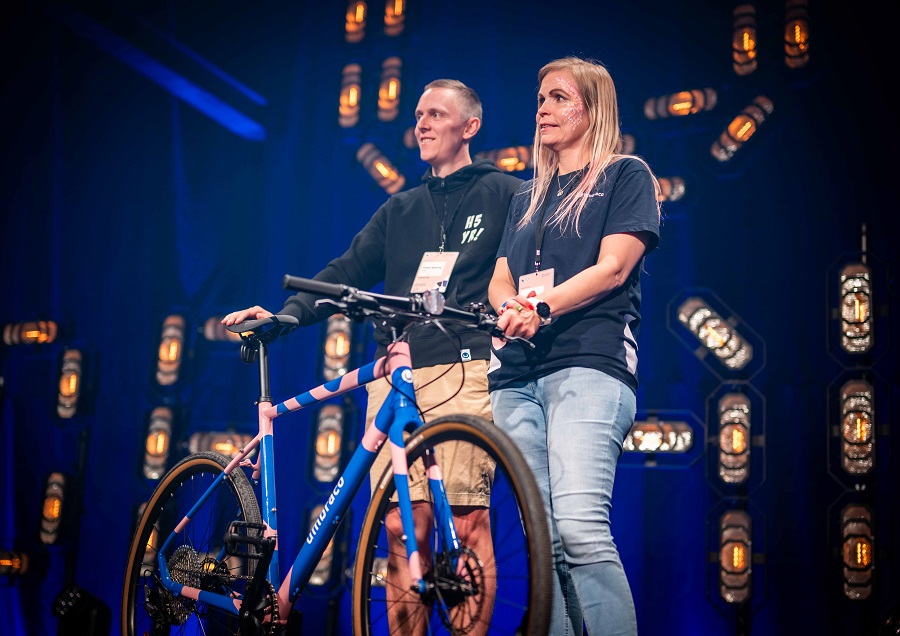General News
General Supply Chain NewsEtive Mòr wins Umbraco Sustainability Challenge with low-carbon website design

open-source .NET web content management system (CMS) company, Umbraco, has announced that Scottish start-up, Etive Mòr, has won its inaugural Sustainability Challenge.
The Umbraco Sustainability Challenge was announced in October 2023 to encourage web developers and digital agencies to share their successes with implementing carbon-conscious web design practices that measurably reduce the carbon footprint of sites built on the Umbraco CMS platform.
Etive Mòr launched in 2023 to provide APIs that help businesses to measure sustainability. Company founder, Liam Laverty, commented, “The Sustainability Challenge was announced around the same time we were making the decision to rebuild our company website. That solidified our choice to go with Umbraco and we set an ambitious goal to halve our website’s CO2 emissions.”
In a company blog post, Liam Laverty explained how Etive Mòr applied the Umbraco Content Delivery API, the uSync package, and Next.js Static Site Generation (SSG), which pre-builds front-end pages and deploys them via an Azure Content Delivery Network (CDN), rather than using an energy-intensive web server which compiles HTML pages every time a visitor lands on a site. This architecture allowed Etive Mòr to create a website with a measurably reduced carbon footprint. Laverty comments, “The best way to reduce CO2 emissions is not to produce them in the first place, and Umbraco’s new APIs have allowed us to stop doing just that.”
The Sustainability Best Practices published by the Umbraco community Sustainability Team, recommends setting a web page limit of 1Mbyte. By using standard fonts and few colours and images, Etive Mòr shrank its web page weight from 800Kb to 188.6Kb, reducing its Scope 1 emissions by 75%.
Switching off the production server for 90% of the day reduced the site’s Scope 2 emissions.
Scope 3 emissions were reduced by taking a DevOps approach that decreased Github server compute time from 25 hours a month, down to 3.5 hours a month.
Etive Mòr’s redesign of the application’s architecture also reduced its energy consumption on the Umbraco server by more than 90%.
Congratulating Etive Mòr on winning the Sustainability Challenge, Umbraco CMS Product Owner, and Umbraco community Sustainability team leader, Lasse Fredslund said, “Our goal with the Sustainability Challenge was to share carbon-conscious web design and architectures that measurably reduce the energy consumption and CO2e resulting from running websites on the Umbraco CMS platform. Etive Mòòr’s site build implements many of the recommendations provided in Umbraco’s Sustainability Best Practices and provides a blueprint in sustainable web design that others can easily follow.”

Laverty explains in his blog that, instead of the traditional method of HTML page content being compiled when visitors land on a site, which requires a server to sit waiting for requests, Static Site Generation creates front-end websites during the site build and serves content via the Azure CDN, only sending a request to the Umbraco backoffice, via the Next.js app, when stale content needs to be updated. “This means that we’re able to turn off our Umbraco server for more than 23 hours a day. Most pages are created once, irrespective of the number of visitors who will view them. Because of this, we achieve a 95% reduction in CO2e from our Umbraco backoffice application’s Scope 2 emissions,” writes Laverty.
To further reduce the carbon footprint of its site, Etive Mòr makes sure that its build servers are located in Scotland where they are mostly powered by renewable energy, or low-carbon sources. When this is not possible, the company tries to run the build servers at the least-carbon-intense time of day from a datacentre with a low-carbon energy mix. The company also self-hosts Github Action runners in its Edinburgh office to ensure that its DevOps pipelines are run and powered in Scotland.
When tested using independent, third-party CO2 calculators, the newly-designed website now scores A+ in Ecograder and emits less GHG than 96% of websites, as rated by WebsiteCarbon.com
The old site produced between 0.24g and 0.25g CO2 equivalent when tested using WebsiteCarbon.com and Ecograder. The first page view of the new Etive Mòr website, built on Umbraco Cloud using the carbon-conscious architecture, produces between 0.03g to 0.06g CO2e.
Commenting on the carbon-conscious design, Liam Laverty observes that sustainable website design optimizes operational efficiency, which also has cost benefits for businesses, stating, “Cost reductions are an additional benefit. A comparable always-on instance would set us back over £200 a month, while our projected Azure spend on the website this month is below £40. We’d recommend trialing this approach to anyone looking to implement static site generation for small and infrequently changed websites.”
“We initially set a carbon reduction target of 50% and we’ve significantly overachieved in that regard. We’ve taken steps to architect, design and develop our website in a way that will produce as little CO2e as possible. We hope that by publishing our architecture and development decisions, we encourage others to look into the Content Delivery API and SSG approach to Umbraco development in their upcoming projects.”










